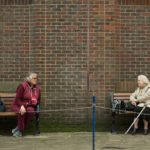 While strategies for coping with the coronavirus pandemic have varied somewhat, a common feature among them has been the requirement for people to keep a distance from one another. This has resulted in bans on large gatherings, and a request that even if people are buying groceries or exercising, that they keep a few meters from those around them.
While strategies for coping with the coronavirus pandemic have varied somewhat, a common feature among them has been the requirement for people to keep a distance from one another. This has resulted in bans on large gatherings, and a request that even if people are buying groceries or exercising, that they keep a few meters from those around them.
A new project from the National University of Singapore uses Wi-Fi data to monitor whether people are observing this guidance inside buildings. The tool is specifically designed for university campuses, where the developers believe the concentration of people is high, and allows leaders to make informed decisions to reduce the risk of person-to-person transmission.
“The beauty of this system lies in its ability to accumulate useful information and to share it without further disrupting life on campus,” the team explain.
People tracking
They believe that the Wi-Fi data when aggregated across thousands of mobile users provides a strong, real-time picture of the location and movement of people on campus, which can be scaled up to provide a detailed map of movement over time.
The team plan to work with Nanyang Technological University to deploy the system there too, before hopefully rolling it out across Singapore.
Suffice to say, for such a tool to work effectively at a population level, a different method of collecting data is likely to be required. The team liken it to how Waze helps monitor traffic and allows people to better plan trips.
There have already been projects underway to perform such location tracking at scale, with the White House revealing they were in contact with both Facebook and Google to do this, while a couple of data firms revealed how the technology might work with data from the phones of people on spring break in Florida.
Of course, such approaches have raised concerns about the privacy of individuals, and the ACLU recently urged any such measures to be purely temporary, with the data limited to use by public health agencies, and for public health purposes, to try and avoid misuse.
They also caution that such location data may not be sufficiently accurate to allow for contact tracing, and cite an example from Israel, where cellphone data was used to monitor the movement of citizens, with a woman who had waved at her (infected) boyfriend from outside his apartment building issued with a quarantine order.
While the approach may certainly be tempting, therefore, it is likely to be one that should be used with caution.